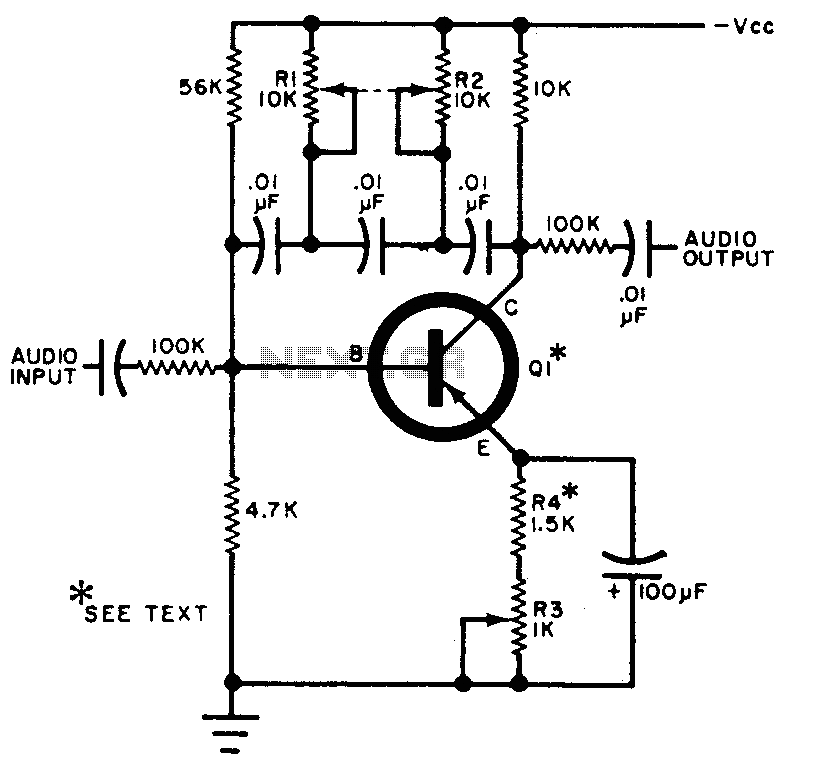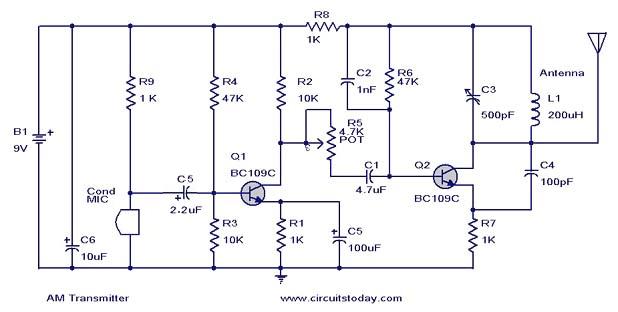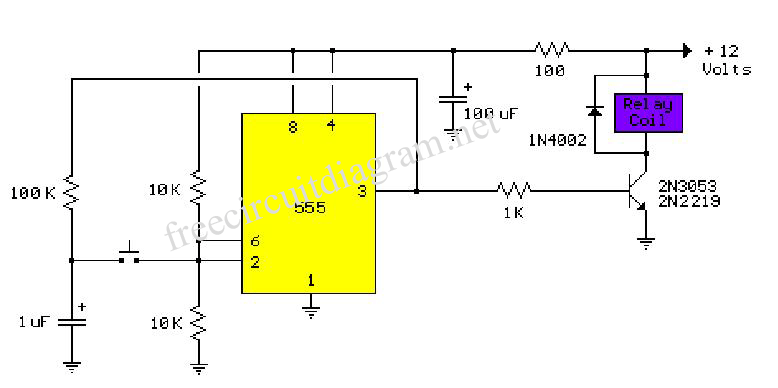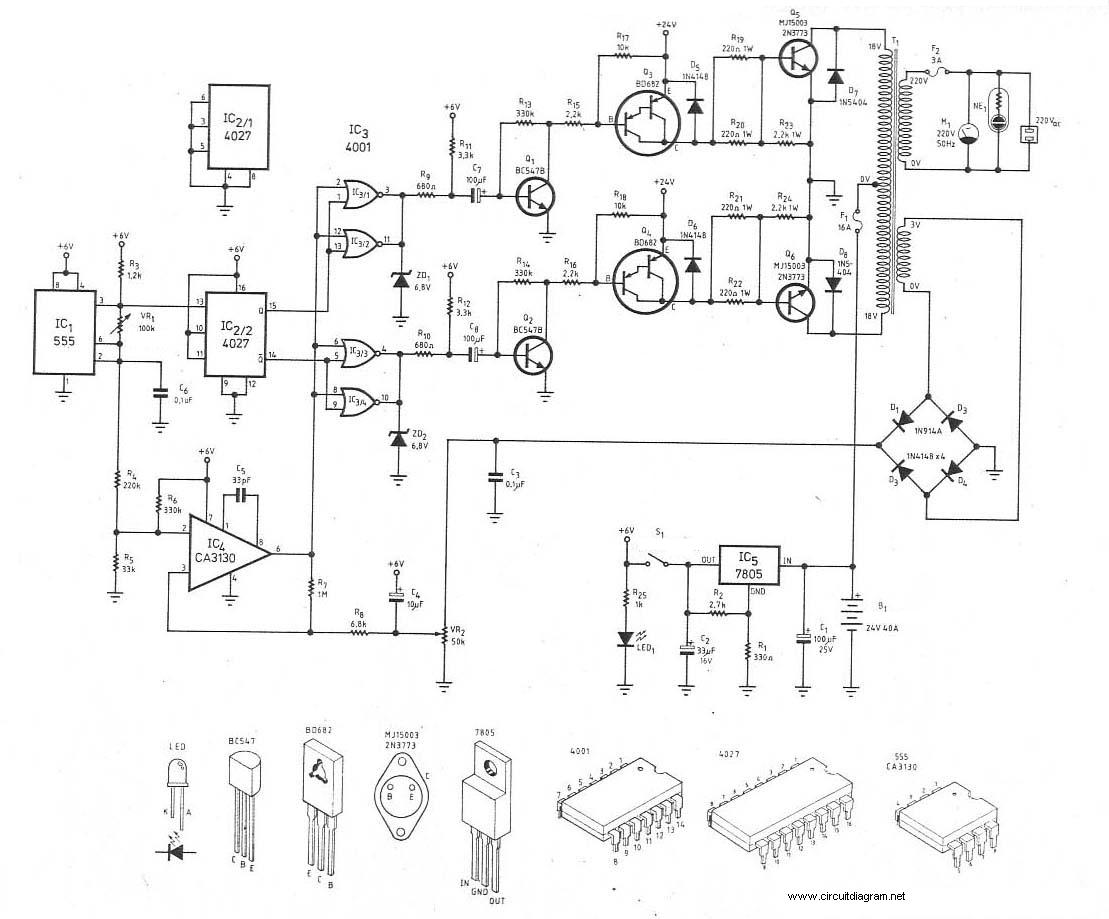
in circuit transistor checker

This simple circuit is designed to check transistors, allowing measurements down to 40 ohms across the collector-base or base-emitter junctions. It is also capable of testing output power transistors in amplifier circuits. The circuit operates with a 555 timer (IC1) configured as a 12 Hz multivibrator. The output from pin 3 drives a 4027 flip-flop (IC2), which divides the input frequency by two and provides complementary voltage outputs at pins 15 and 14. These outputs are connected to LED1 and LED2 through a current-limiting resistor (R3). The LEDs are arranged such that when the circuit polarity is one way, only one LED lights up, and when the polarity reverses, the other LED lights up. Thus, when no transistor is connected to the tester, the LEDs will alternate flashing. The outputs from IC2 are also connected to resistors R4 and R5, with their junction connected to the base of the transistor being tested. When a good transistor is connected, it will turn on and create a short across the LED pair. If a good NPN transistor is connected, LED1 will flash alone; if a good PNP transistor is connected, LED2 will flash alone. If the transistor is open, both LEDs will flash, and if it is shorted, neither LED will flash.
The circuit employs a 555 timer configured in astable mode, producing a square wave output at a frequency of 12 Hz. This output serves as the clock signal for the 4027 flip-flop, which functions to divide the frequency by two, yielding complementary outputs. The flip-flop's outputs are used to control two LEDs, providing a visual indication of the transistor's condition.
Resistor R3 is crucial for limiting the current flowing through the LEDs, preventing damage while ensuring adequate brightness. The arrangement of the LEDs allows for clear indication of the transistor type being tested: NPN or PNP. The current-limiting resistors R4 and R5 serve to bias the base of the transistor under test, ensuring that it operates within its specified parameters.
When a transistor is connected, its characteristics dictate the behavior of the LEDs. A functioning NPN transistor will allow current to flow through LED1, illuminating it, while a functioning PNP transistor will cause LED2 to light up. The circuit's design ensures that it can effectively diagnose the state of the transistor, providing immediate feedback on its functionality. If the transistor is open, the circuit will not complete, resulting in both LEDs flashing alternately, indicating that the transistor is not conducting. Conversely, if the transistor is shorted, it will create a direct path, preventing any LED from lighting.
This circuit is a practical tool for electronics enthusiasts and professionals, allowing for quick and efficient testing of transistor functionality in various applications, including audio amplifiers and signal processing circuits.This simple circuit has helped me out on many occasions. It is able to check transistors, in the circuit, down to 40 ohms across the collector-base or base-emitter junctions. It can also check the output power transistors on amplifier circuits. Circuit operation is as follows. The 555 timer ( IC1 ) is set up as a 12hz multi vibrator. The output on pin 3 drives the 4027 flip-flop ( IC2). This flip-flop divides the input frequency by two and delivers complementary voltage outputs to pin 15 and 14. The outputs are connected to LED1 and LED2 through the current limiting resistor R3. The LEDs are arranged so that when the polarity across the circuit is one way only one LED will light and when the polarity reverses the other LED will light, therefore when no transistor is connected to the tester the LEDs will alternately flash.
The IC2 outputs are also connected to resistors R4 and R5 with the junction of these two resistors connected to the base of the transistor being tested. With a good transistor connected to the tester, the transistor will turn on and produce a short across the LED pair.
If a good NPN transistor is connected then LED1 will flash by itself and if a good PNP transistor is connected then LED2 will flash by itself. If the transistor is open both LEDs will flash and if the transistor is shorted then neither LED will flash.
🔗 External reference
The circuit employs a 555 timer configured in astable mode, producing a square wave output at a frequency of 12 Hz. This output serves as the clock signal for the 4027 flip-flop, which functions to divide the frequency by two, yielding complementary outputs. The flip-flop's outputs are used to control two LEDs, providing a visual indication of the transistor's condition.
Resistor R3 is crucial for limiting the current flowing through the LEDs, preventing damage while ensuring adequate brightness. The arrangement of the LEDs allows for clear indication of the transistor type being tested: NPN or PNP. The current-limiting resistors R4 and R5 serve to bias the base of the transistor under test, ensuring that it operates within its specified parameters.
When a transistor is connected, its characteristics dictate the behavior of the LEDs. A functioning NPN transistor will allow current to flow through LED1, illuminating it, while a functioning PNP transistor will cause LED2 to light up. The circuit's design ensures that it can effectively diagnose the state of the transistor, providing immediate feedback on its functionality. If the transistor is open, the circuit will not complete, resulting in both LEDs flashing alternately, indicating that the transistor is not conducting. Conversely, if the transistor is shorted, it will create a direct path, preventing any LED from lighting.
This circuit is a practical tool for electronics enthusiasts and professionals, allowing for quick and efficient testing of transistor functionality in various applications, including audio amplifiers and signal processing circuits.This simple circuit has helped me out on many occasions. It is able to check transistors, in the circuit, down to 40 ohms across the collector-base or base-emitter junctions. It can also check the output power transistors on amplifier circuits. Circuit operation is as follows. The 555 timer ( IC1 ) is set up as a 12hz multi vibrator. The output on pin 3 drives the 4027 flip-flop ( IC2). This flip-flop divides the input frequency by two and delivers complementary voltage outputs to pin 15 and 14. The outputs are connected to LED1 and LED2 through the current limiting resistor R3. The LEDs are arranged so that when the polarity across the circuit is one way only one LED will light and when the polarity reverses the other LED will light, therefore when no transistor is connected to the tester the LEDs will alternately flash.
The IC2 outputs are also connected to resistors R4 and R5 with the junction of these two resistors connected to the base of the transistor being tested. With a good transistor connected to the tester, the transistor will turn on and produce a short across the LED pair.
If a good NPN transistor is connected then LED1 will flash by itself and if a good PNP transistor is connected then LED2 will flash by itself. If the transistor is open both LEDs will flash and if the transistor is shorted then neither LED will flash.
🔗 External reference
Warning: include(partials/cookie-banner.php): Failed to open stream: Permission denied in /var/www/html/nextgr/view-circuit.php on line 713
Warning: include(): Failed opening 'partials/cookie-banner.php' for inclusion (include_path='.:/usr/share/php') in /var/www/html/nextgr/view-circuit.php on line 713





